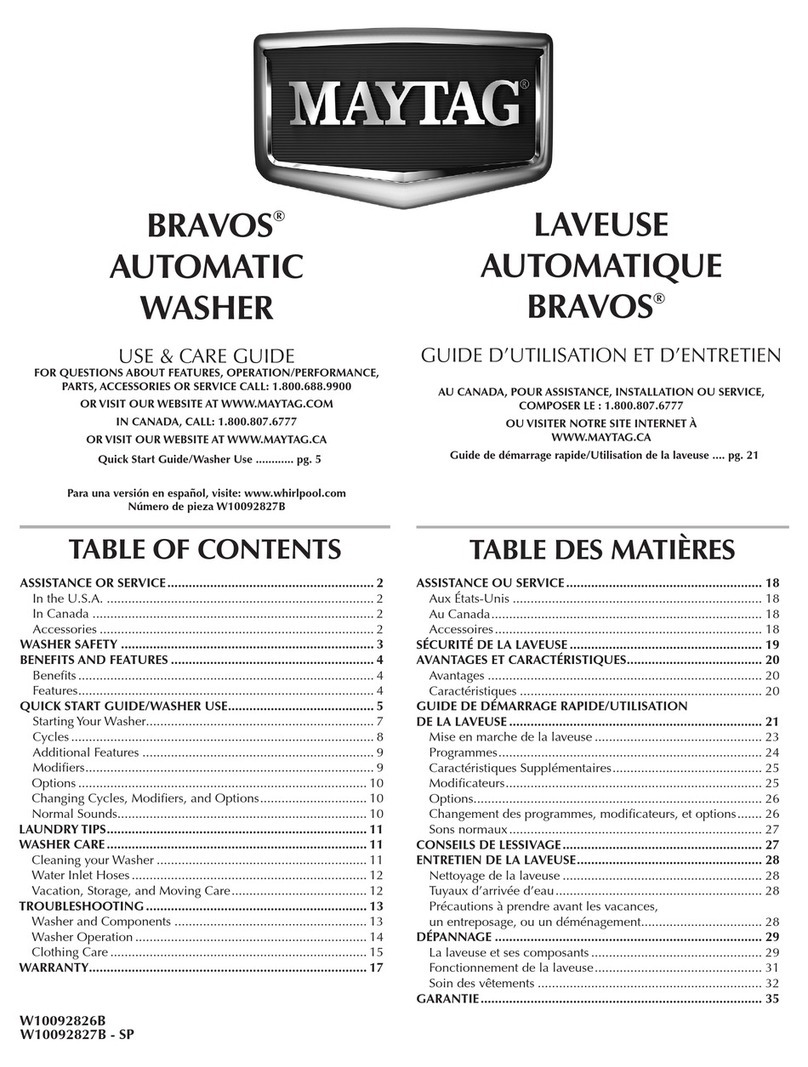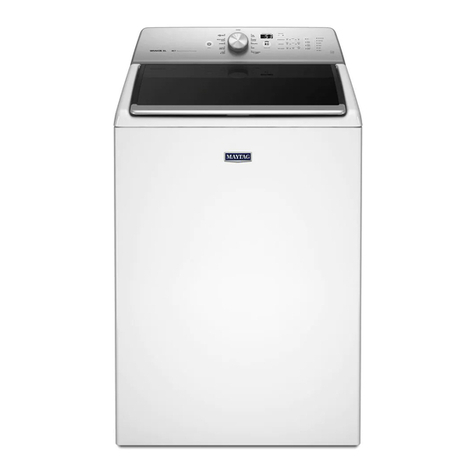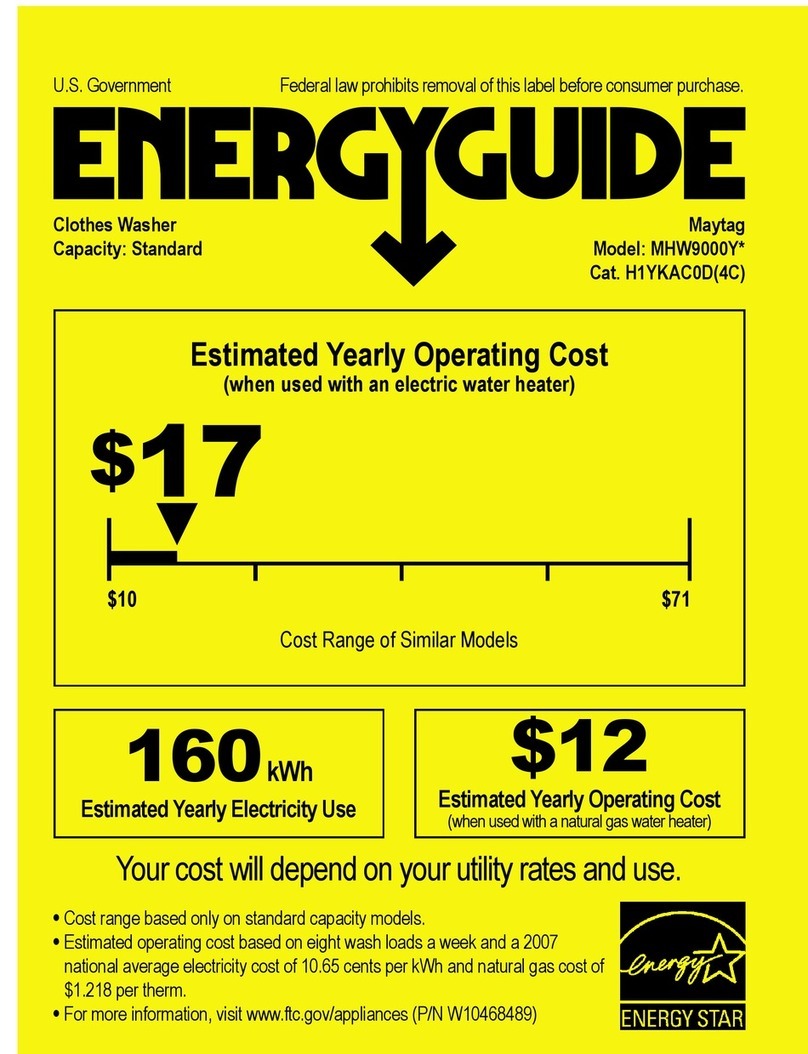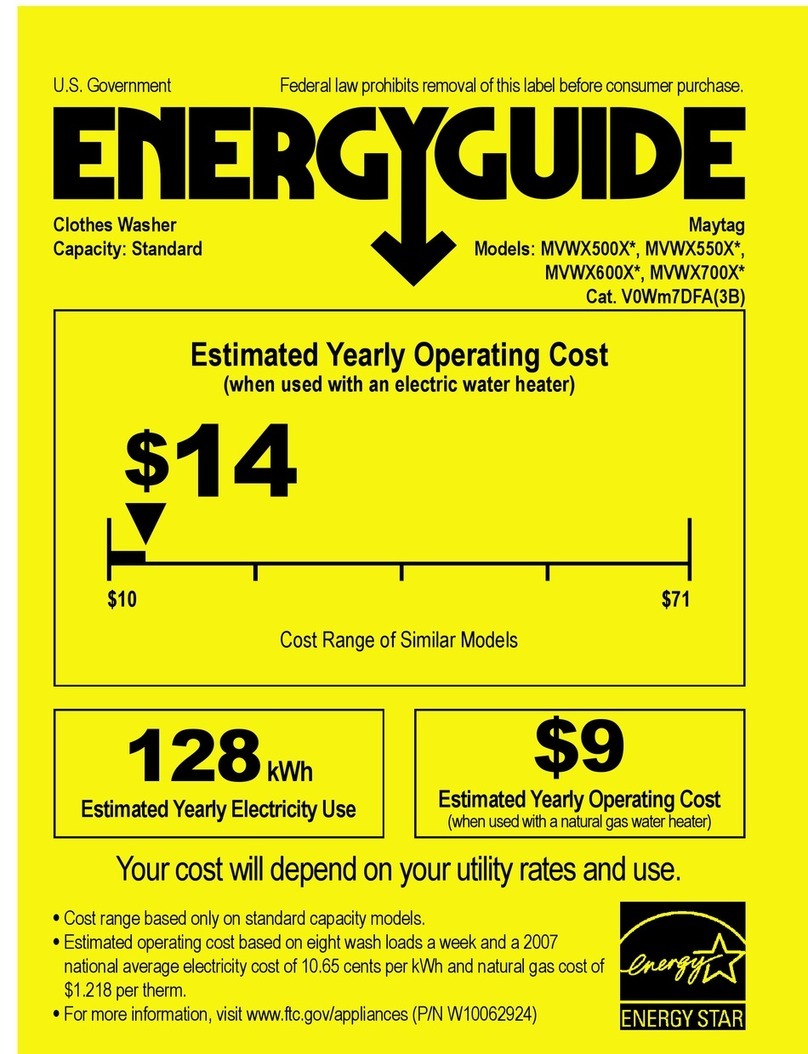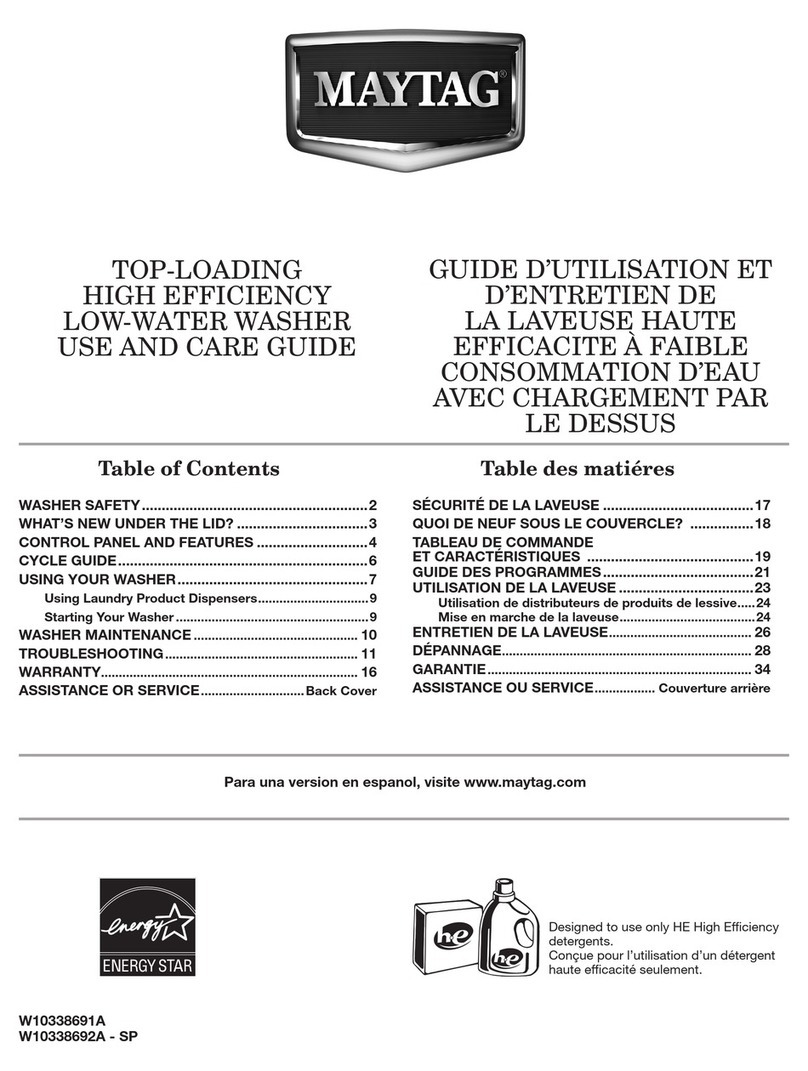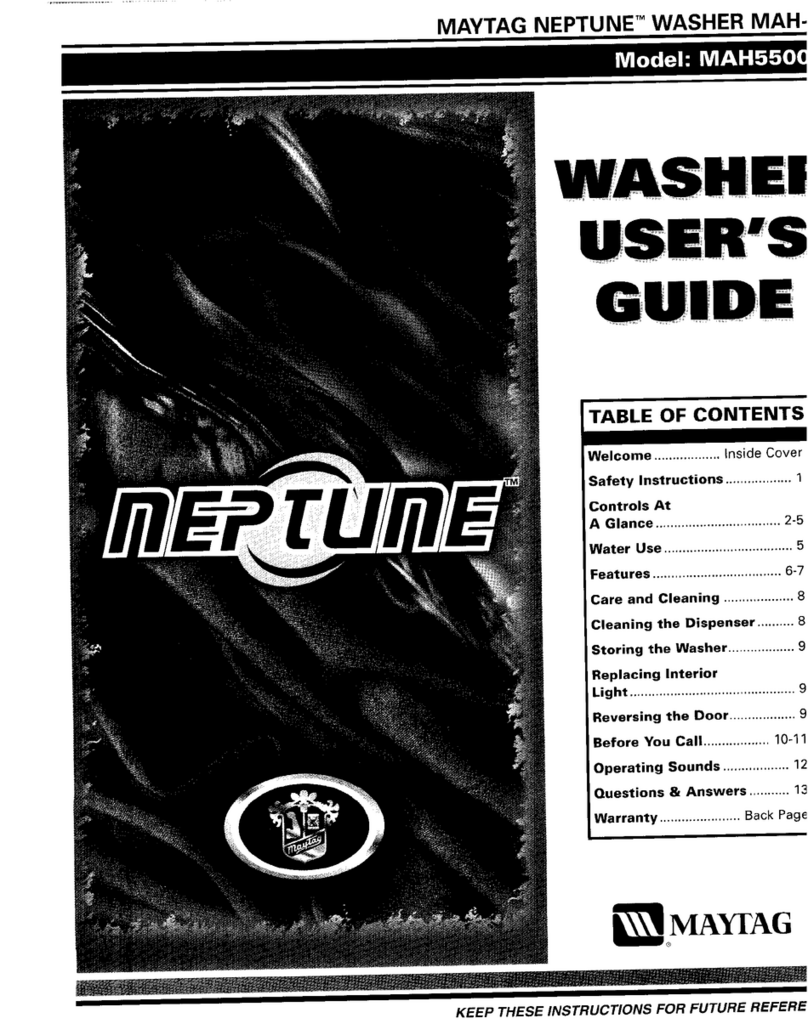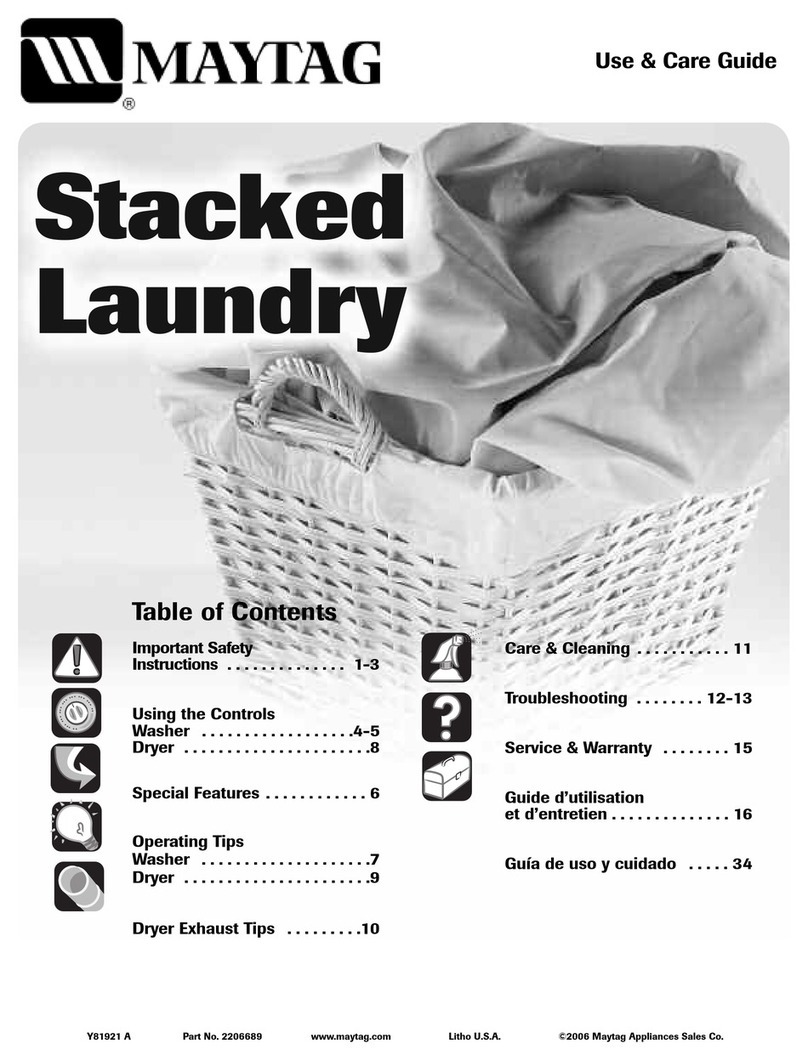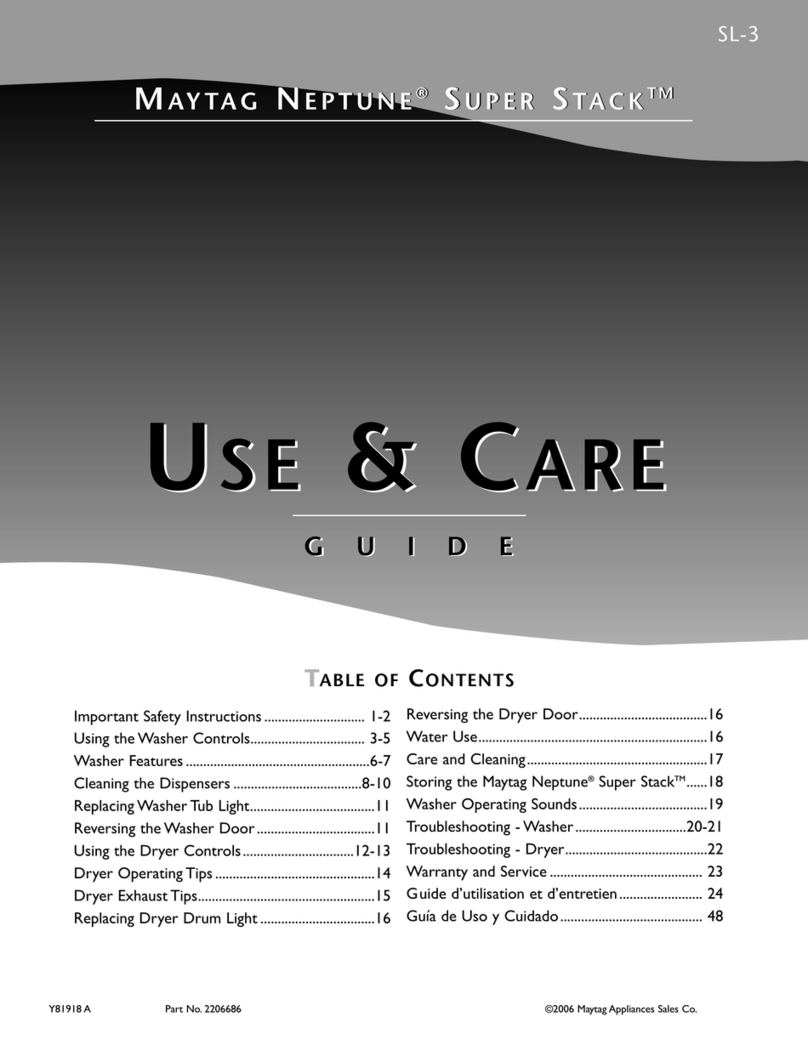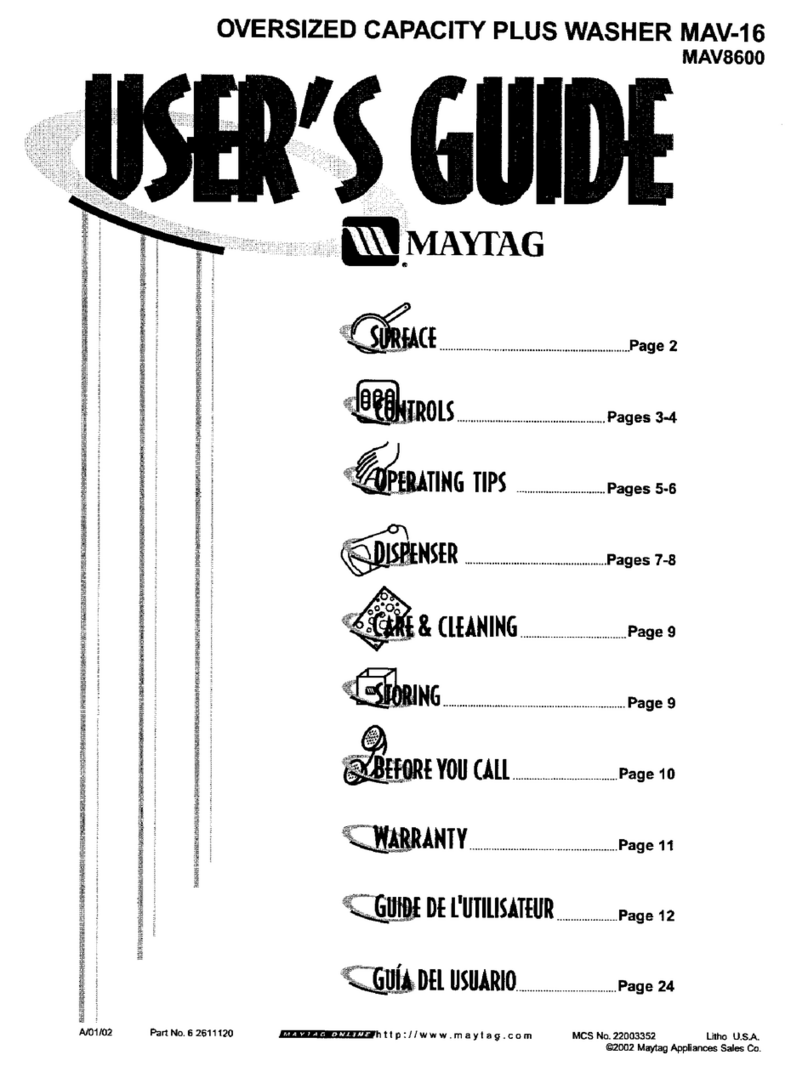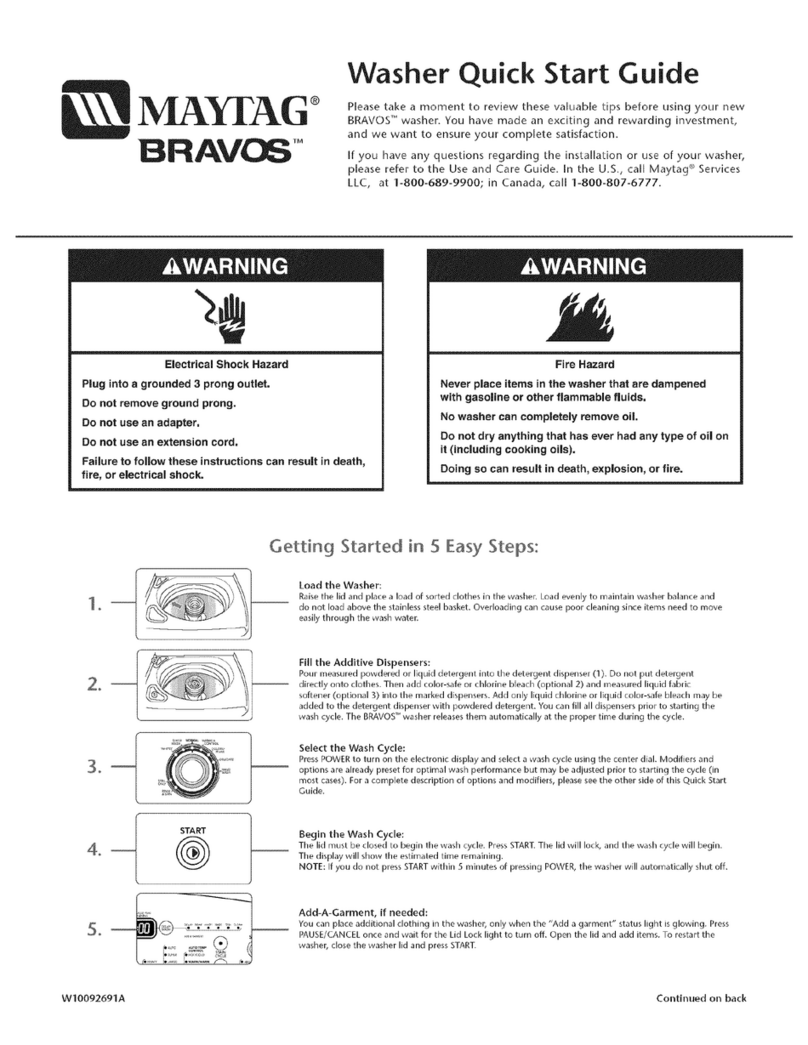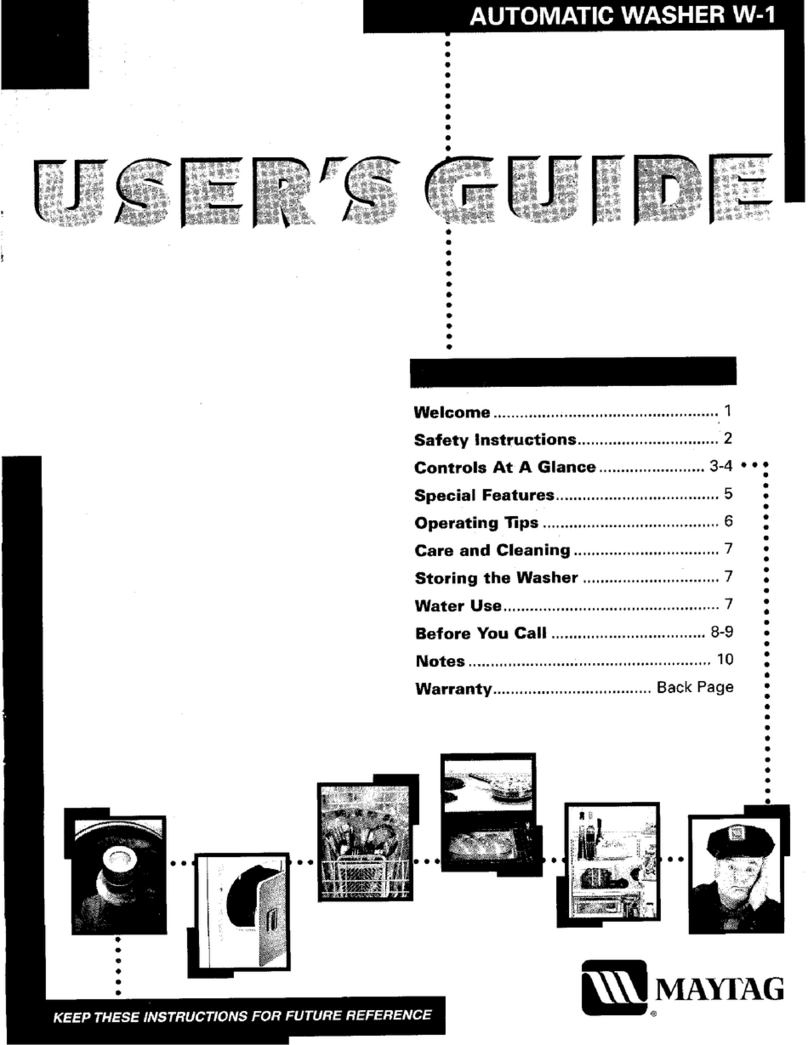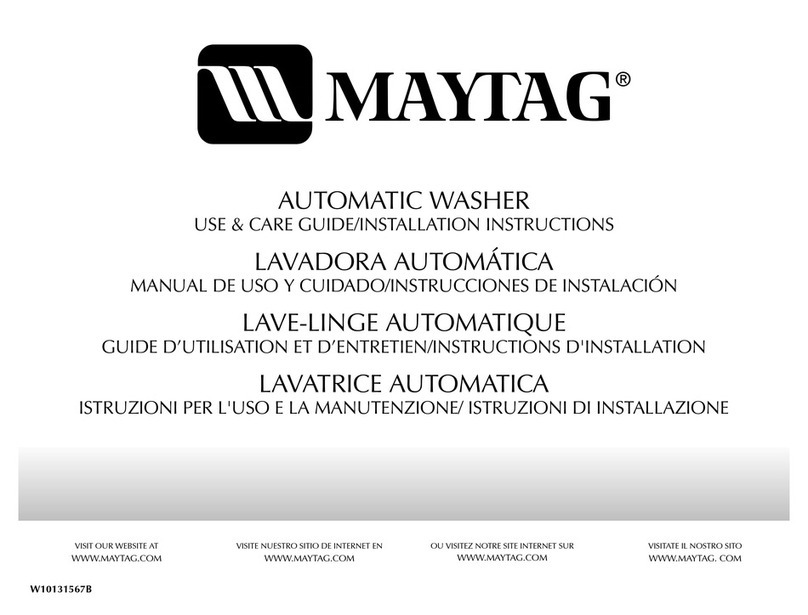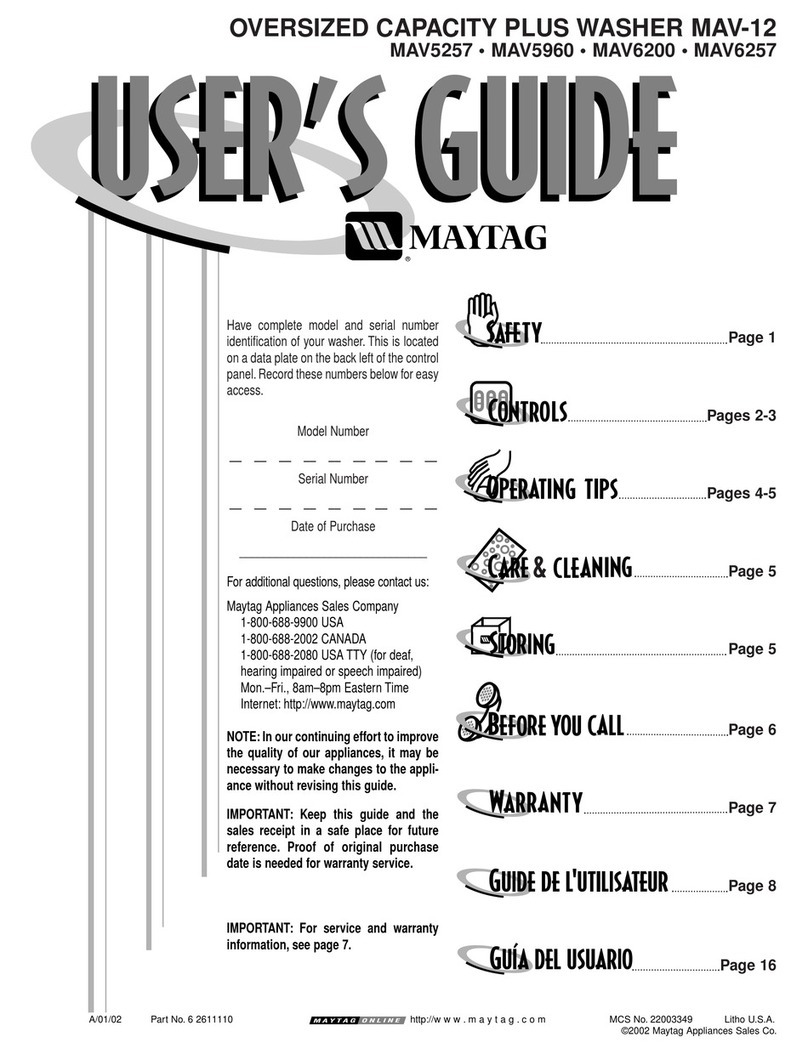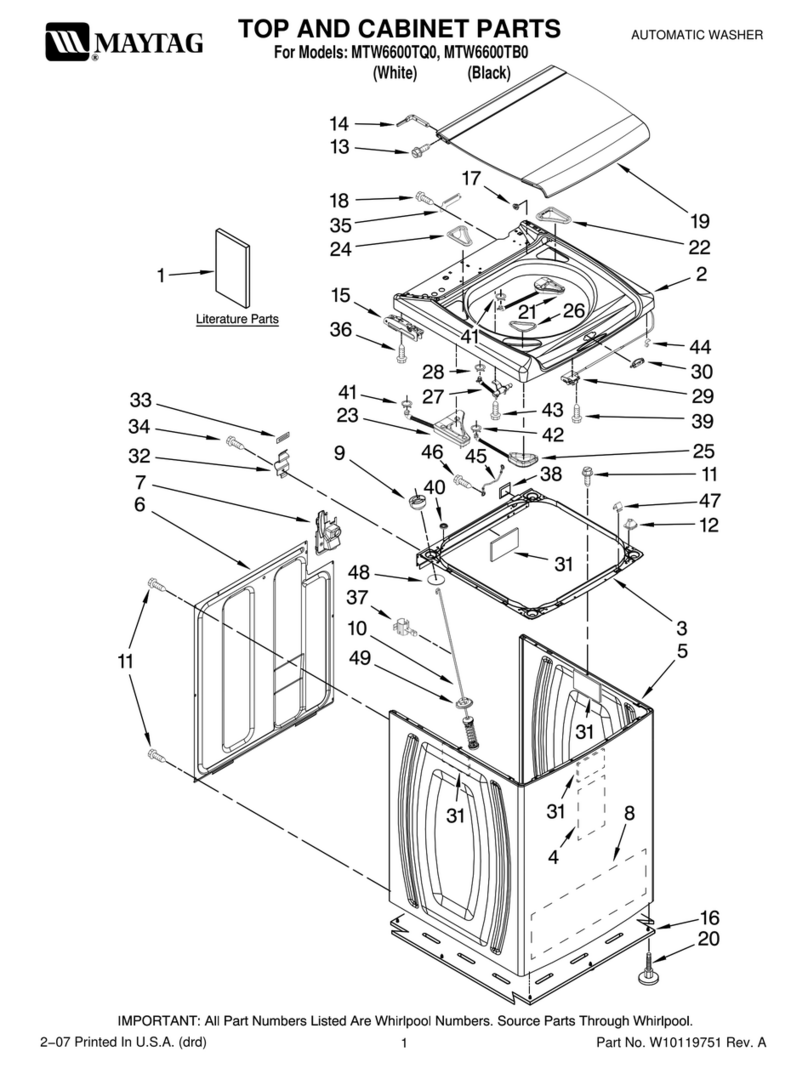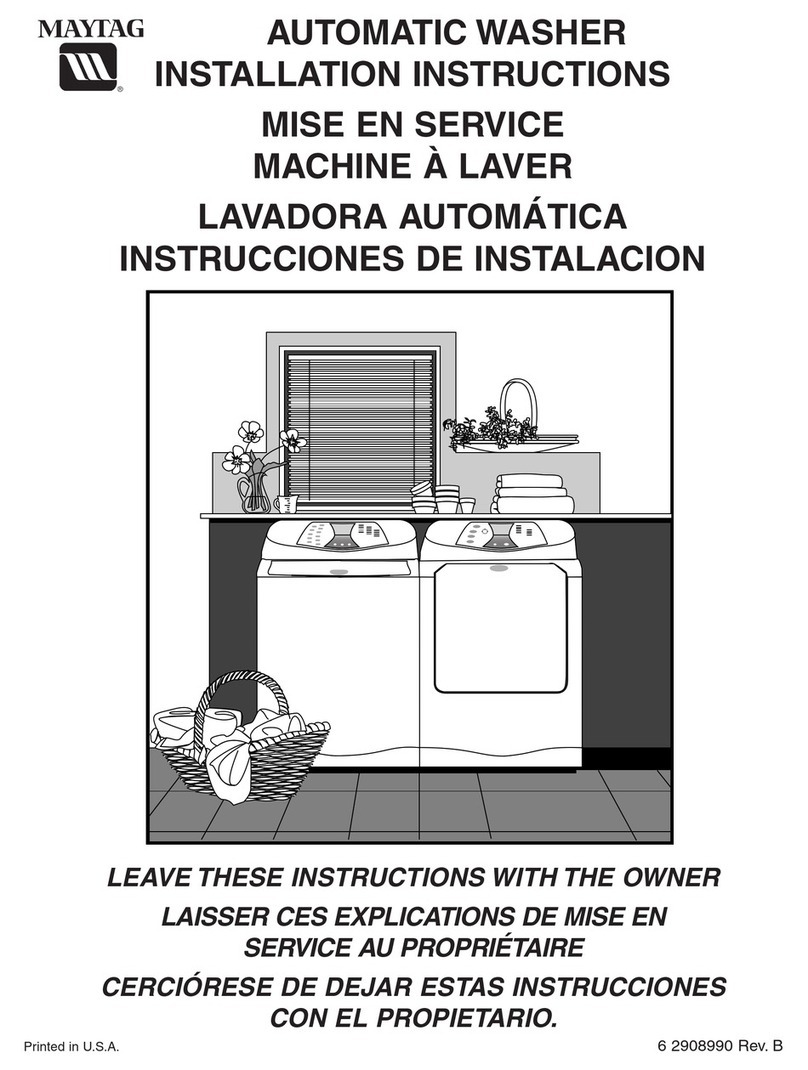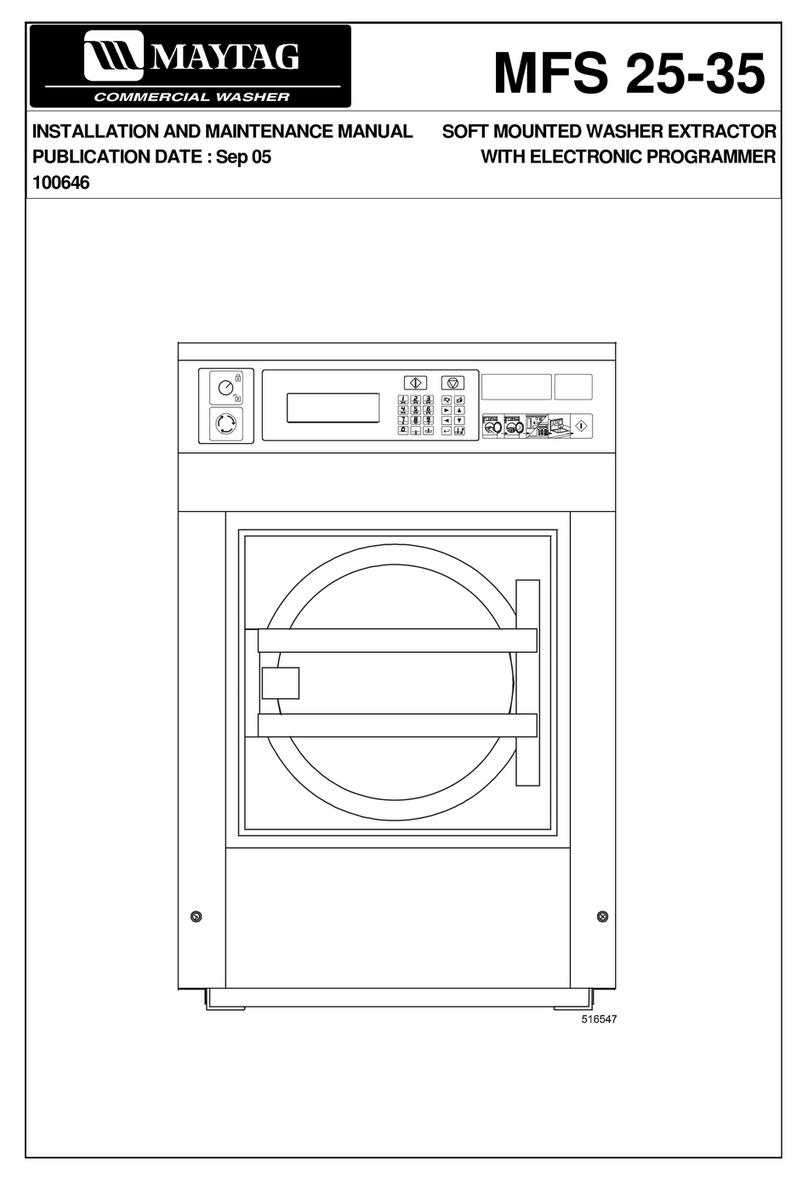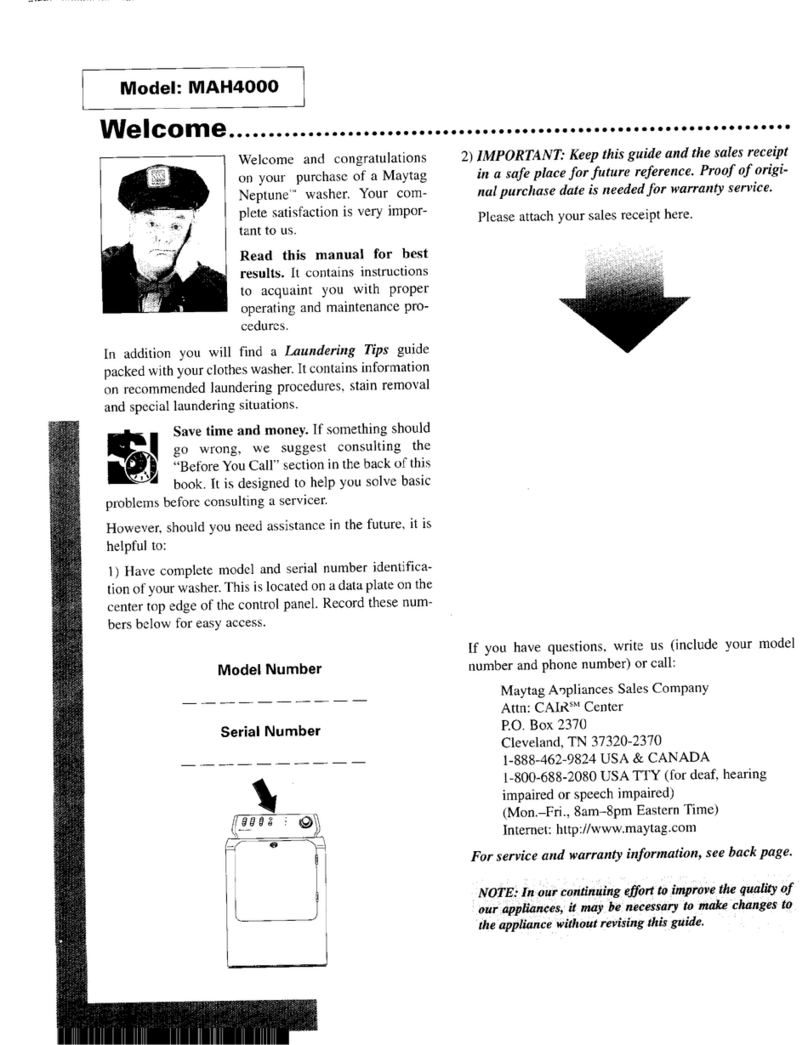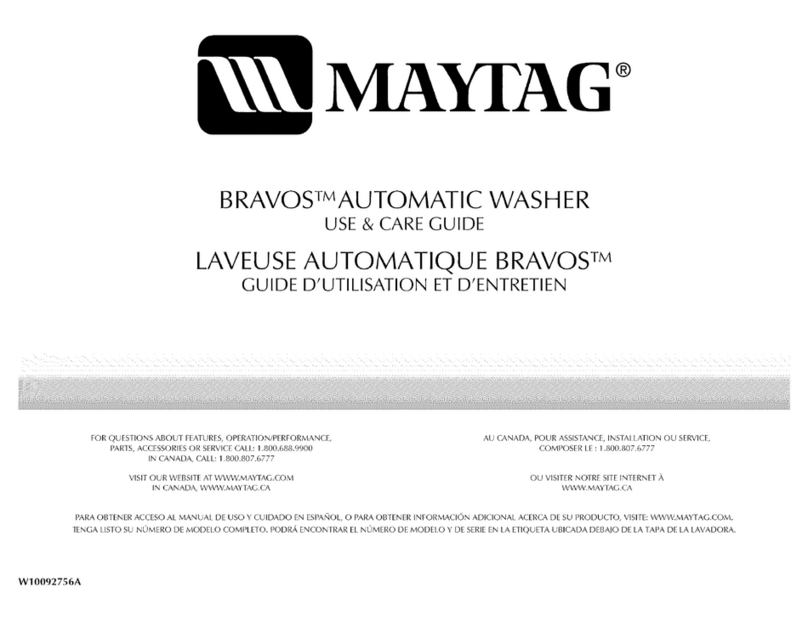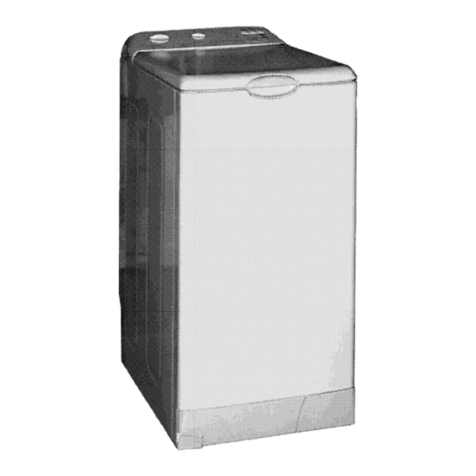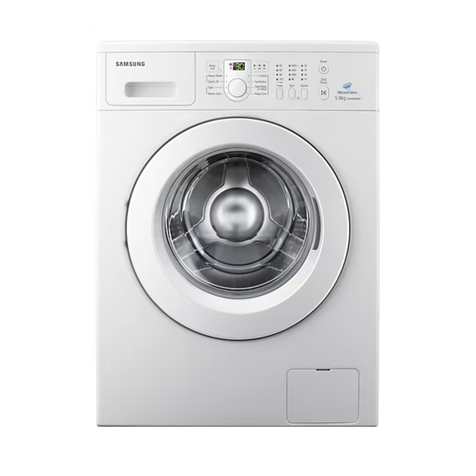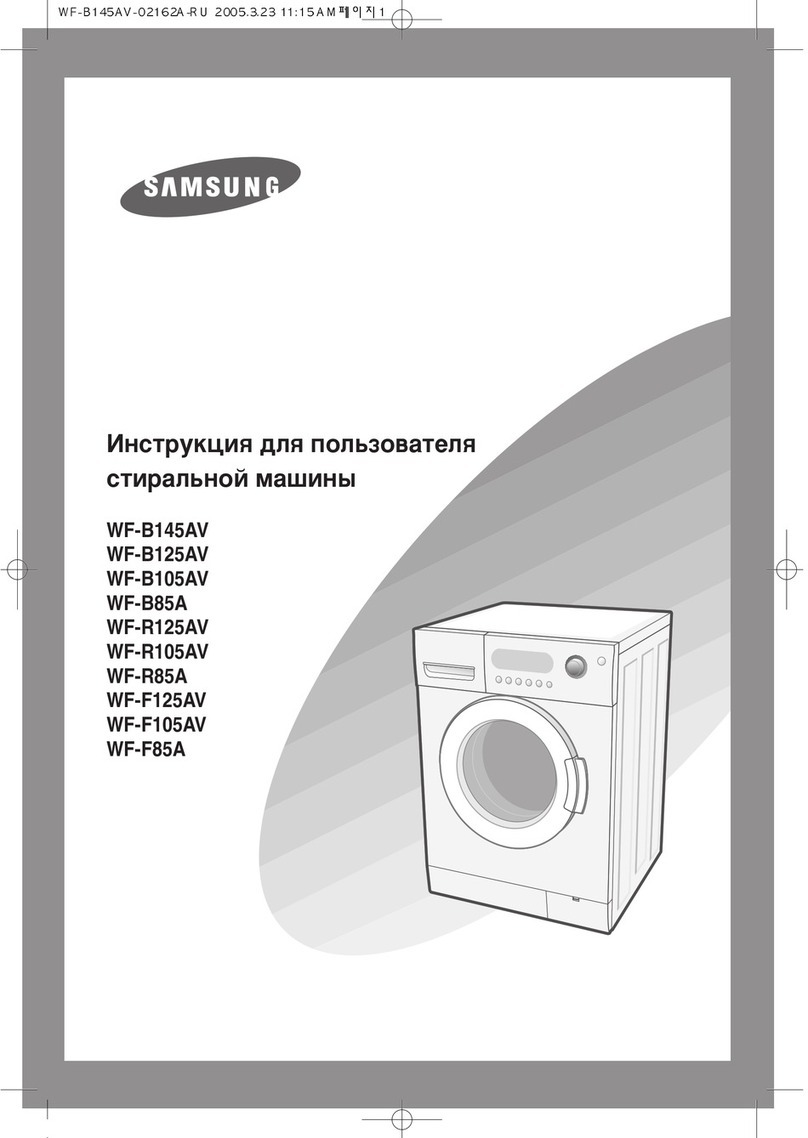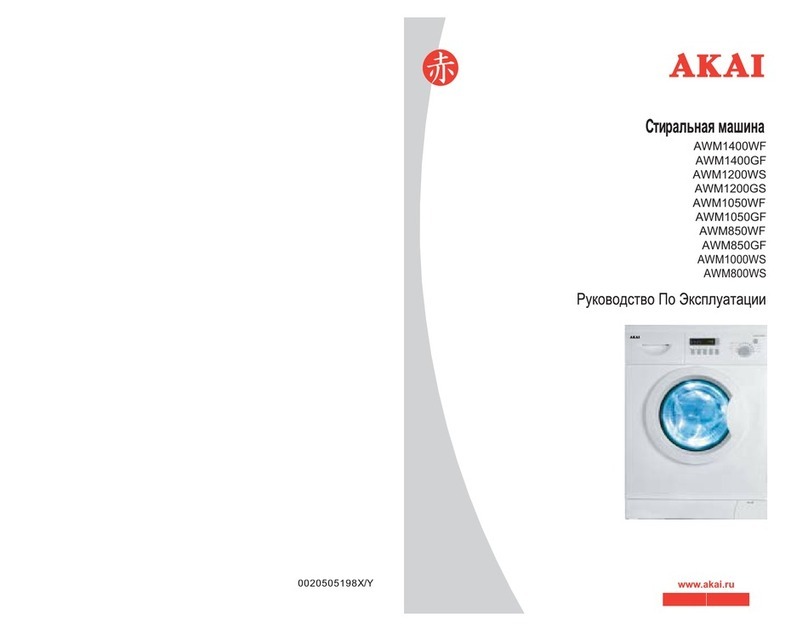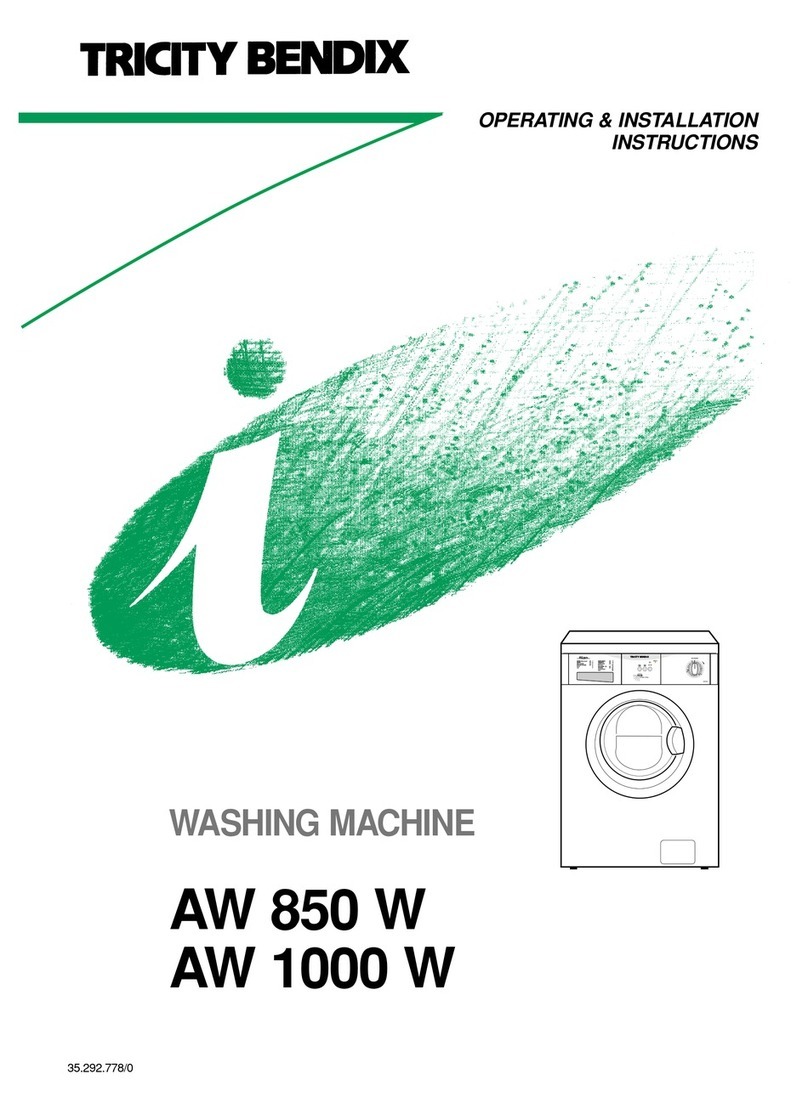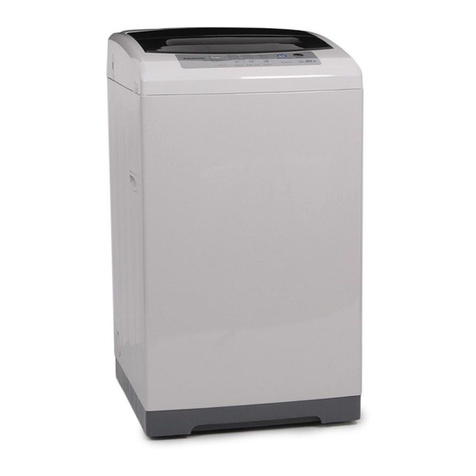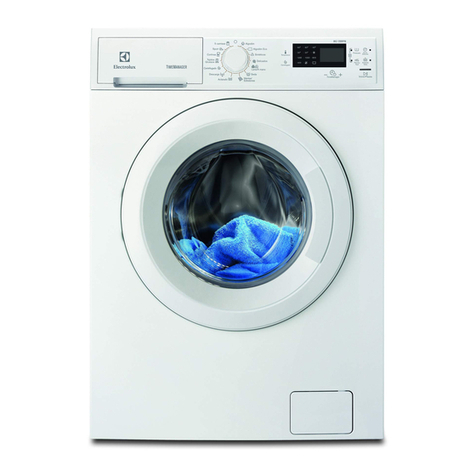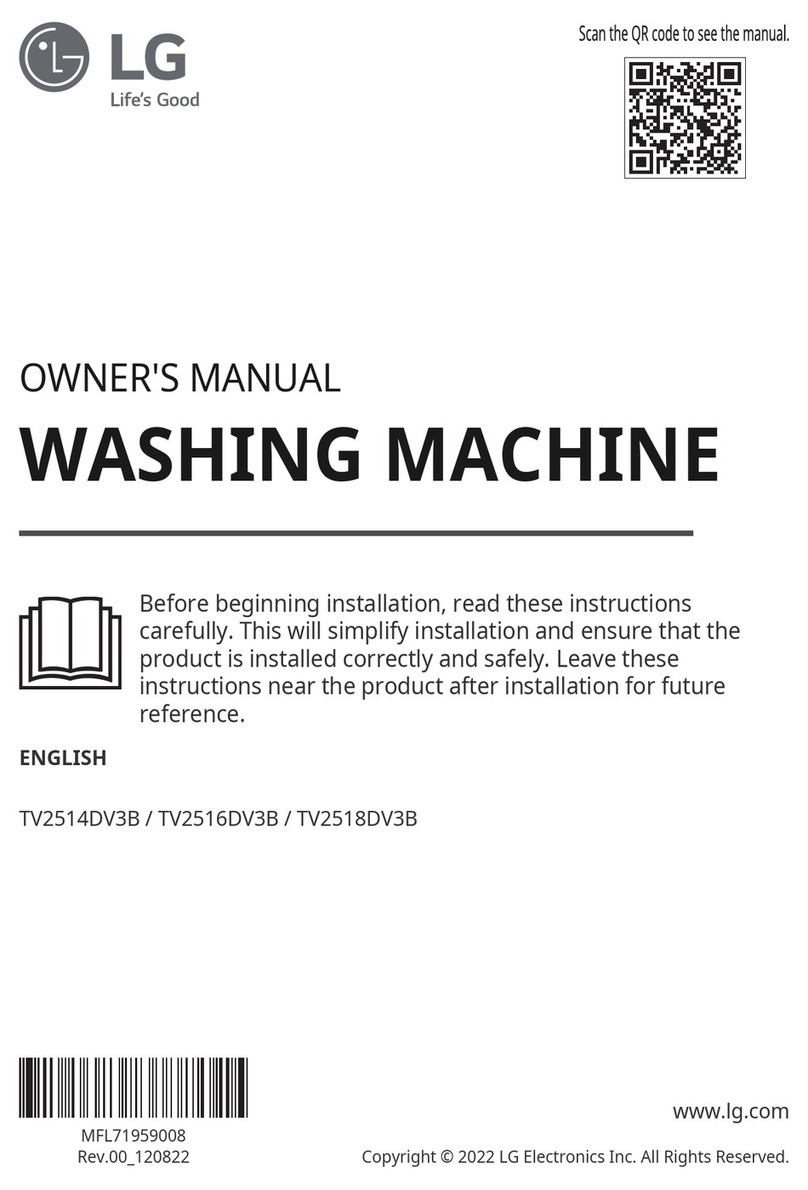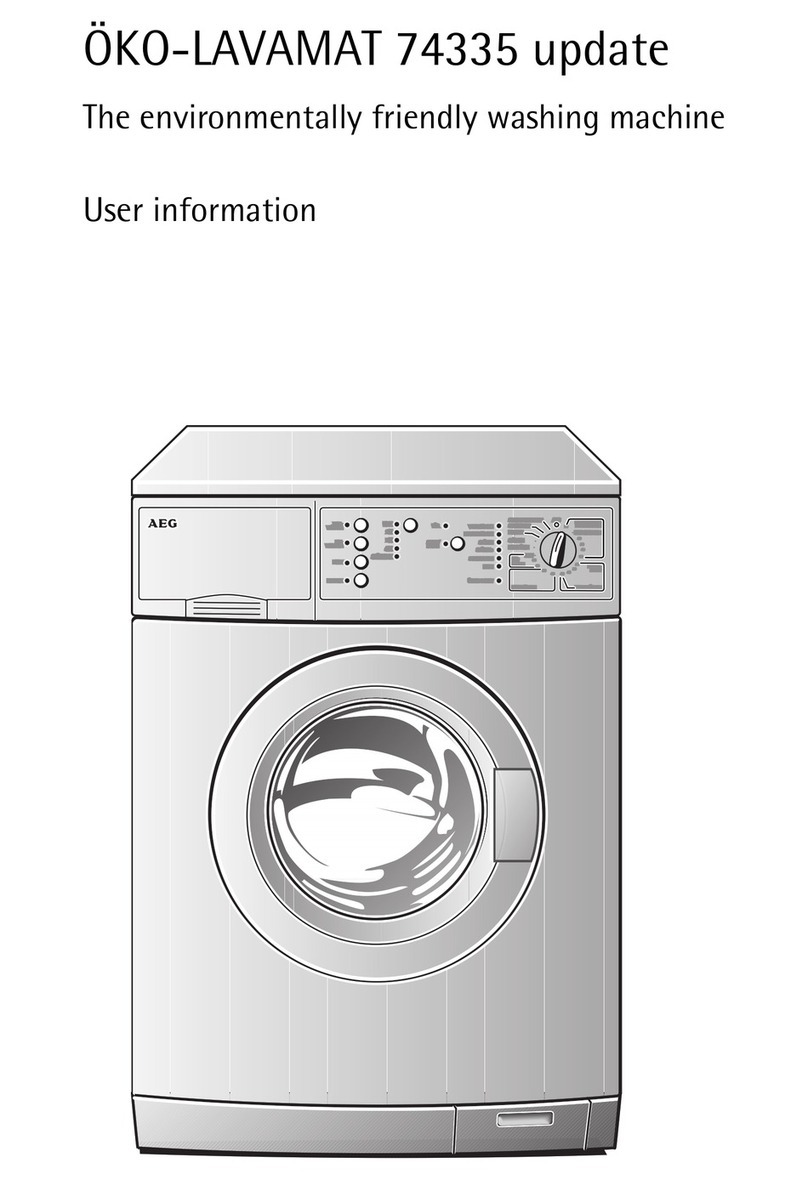
4
CONTROL PANEL AND FEATURES
CYCLE OPTIONS
The following options may be added to most cycle.
See “Cycle Guide” for additional details.
DEEP CLEAN
This option provides enhanced cleaning action for tough
stains. It will add additional agitation and soak time to the
cycle.
FABRIC SOFTENER ADDED
This option must be set to “Yes” if using fabric softener.
EXTRA RINSE
This option can be used to automatically add a second
rinse to most cycles.
TEMPERATURE
Temperature Control senses and maintains uniform water
temperatures by regulating incoming hot and cold water.
Select a wash temperature based on the type of fabric and soils
being washed. For best results and following the garment label
instructions, use the warmest wash water safe for your fabric.
• Warm and hot water will be cooler than what your previous
washer provided.
• Even in a cool water wash, some warm water may be added
to the washer to maintain a minimum temperature.
WASH CYCLE
Use the Wash Cycle to select available cycles on your washer.
Turn the knob to select a cycle for your laundry load. See
“Cycle Guide” for detailed descriptions.
START/PAUSE/UNLOCK BUTTON
Press to start the selected cycle; press again to pause the cycle
and unlock the lid.
NOTE: If the washer is spinning, it may take several minutes to
unlock the lid. Press and hold 3 sec to cancel a cycle.
1
2
3
4
5
CYCLE STATUS LIGHTS
The Cycle Status Lights show the progress of a cycle. At each
stage of the process, you may notice sounds or pauses that are
different from traditional washers.
SENSING
When the START/Pause/Unlock button is pressed, the washer
will rst perform a self-test on the lid lock mechanism. You will
hear a click, the basket will make a slight turn, and the lid will
unlock briey before locking again.
Once the lid has locked the second time, the washer will use
short, slow spins to estimate the load size. These sensing spins
may take 2 to 3 minutes before water is added to the load and
you may hear the hum of these spins. If the sensing light is on,
then washer is working properly. The washer will then move
the load briey, pause to allow water to soak in to the load,
and resume adding water. This process may repeat until the
correct amount of water has been added for the load. You may
also hear water owing through the dispenser, adding detergent
to the load.
NOTE: Avoid opening lid during sensing. The sensing process
will start over when the washer is restarted. The sensing light
may also come on during the Wash portion of the cycle. This
is normal.
WASH
You will hear the washplate moving the load. Unlike traditional
washers, the load is not covered with water. Low-water
cleaning means concentrated cleaning. Rather than diluting
detergent as done in an agitator-style washer, this washer
delivers the detergent directly to the soils. The motor sounds
may change at different stages in the cycle. The wash time is
determined by the selected soil level.
3
5
4
21 1

